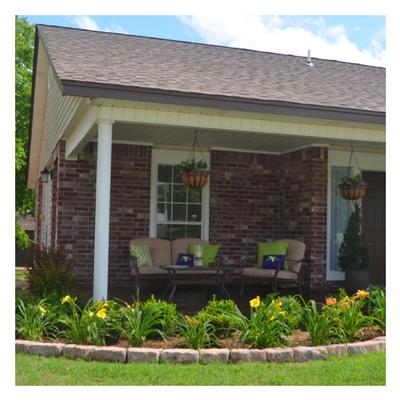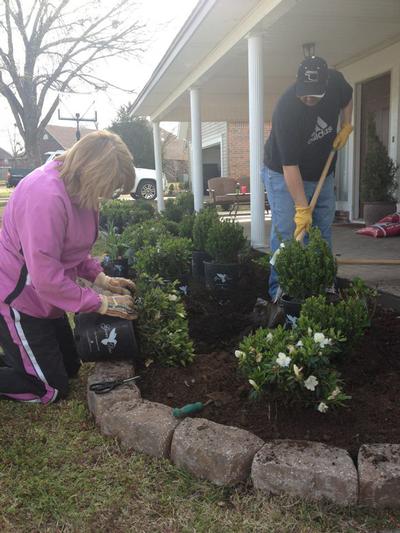Spring Planting
Early spring is an excellent time to plant everything from bulbs to vegetables to perennials, shrubs and trees. Several weeks of milder weather allows roots to grow deep into the soil before harsh summer temperatures set in.
There are three important steps in spring planting: (1) Planning, (2) Selection, and (3) Planting.
Planning
Many gardeners plan their gardens/landscapes during the winter months, but if you’re just getting started, that’s okay too! A key aspect of planning is to determine how many square feet of garden/landscape you have to work with. Then evaluate whether or not existing plant materials need to be moved or removed.
Based on the square footage you can calculate how much topsoil and mulch you will need to purchase and roughly how many plants you’re going to need. This number may increase or decrease after plant selection depending on each plant’s mature size. During this time you should also take note of how many hours of sunlight your garden/landscape receives throughout the day and whether it receives morning or evening sun.
Selection
Next comes the exciting part: plant selection! During your planning you should have determined how many plants you’ll need for the sunny, partially sunny, partially shady and shady areas of your garden/landscape. With that in mind, you can utilize the Garden Debut® Advanced Search to identify plants that meet your desired characteristics.
For example, when determining what to plant in a sunny area along my fence line I looked to three major characteristics: (1) hardiness zone, to ensure the plant would survive through Oklahoma winters, (2) exposure, to ensure the plant could ensure 6+ hours of afternoon sunlight, and (3) height, to ensure the plant would grow taller than my fence. This criteria led me to plant three The Rising Sun™ Redbud PP21451 trees along my fence line. The Rising Sun™ Redbud is cold hardy to USDA Zone 4, which is much more cold tolerant than the required Zone 6 for Oklahoma. It can withstand full sun exposure, and it grows 8 to 12 feet tall. Other desired characteristics may be year-round foliage, colorful fall foliage, fragrance, or something that attracts butterflies and hummingbirds.
Planting
Finally the hard work kicks in. After purchasing your desired plants, ask family and friends to assist in the planting process. Large shrubs and trees often require two people to lift and place properly. Take the time to place all plants in the desired planting location to ensure you have spaced them appropriately based on their mature sizes. Overplanting can cause damage to or stunt plant growth if they’re not given enough space for roots to grow.
Once you’re ready to begin planting, dig a hole one and a half times wider than the plant's container. Then place plant in hole, keeping the top of the root ball ground level and back fill with dirt. Water thoroughly and then mulch around the base to conserve moisture and reduce weeds.
New plantings require more frequent watering than established plants. Wind, temperature and soil are factors to consider in watering. Remember to feed plants in early spring and again in early fall with an all-purpose fertilizer, following the label instructions.
Then sit back and enjoy your garden/landscape all year long! To locate a garden center where you can purchase Garden Debut® plants, visit our Find a Retailer page.


